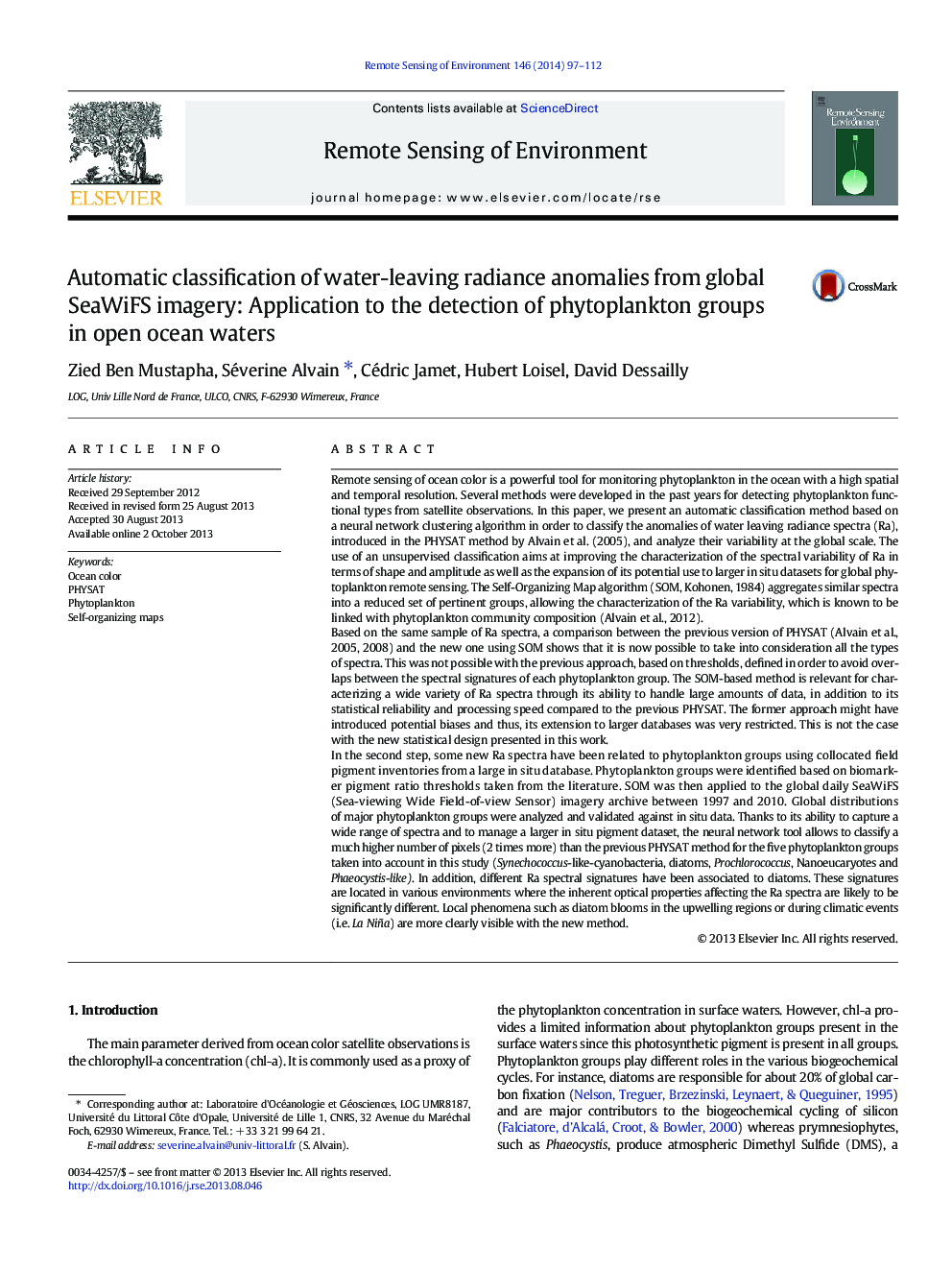| کد مقاله | کد نشریه | سال انتشار | مقاله انگلیسی | نسخه تمام متن |
|---|---|---|---|---|
| 6346684 | 1621254 | 2014 | 16 صفحه PDF | دانلود رایگان |

- Self-Organizing Maps are used to classify PHYSAT Ra spectra (Alvain et al., 2005).
- The method was applied to the 1997-2010 L3 GAC global SeaWiFS imagery.
- New maps of phytoplankton groups were compared to the previous PHYSAT maps.
- PHYSAT-SOM gives better Ra characterization than the previous PHYSAT version.
- PHYSAT-SOM labels a significantly higher number of pixels.
Remote sensing of ocean color is a powerful tool for monitoring phytoplankton in the ocean with a high spatial and temporal resolution. Several methods were developed in the past years for detecting phytoplankton functional types from satellite observations. In this paper, we present an automatic classification method based on a neural network clustering algorithm in order to classify the anomalies of water leaving radiance spectra (Ra), introduced in the PHYSAT method by Alvain et al. (2005), and analyze their variability at the global scale. The use of an unsupervised classification aims at improving the characterization of the spectral variability of Ra in terms of shape and amplitude as well as the expansion of its potential use to larger in situ datasets for global phytoplankton remote sensing. The Self-Organizing Map algorithm (SOM, Kohonen, 1984) aggregates similar spectra into a reduced set of pertinent groups, allowing the characterization of the Ra variability, which is known to be linked with phytoplankton community composition (Alvain et al., 2012).Based on the same sample of Ra spectra, a comparison between the previous version of PHYSAT (Alvain et al., 2005, 2008) and the new one using SOM shows that it is now possible to take into consideration all the types of spectra. This was not possible with the previous approach, based on thresholds, defined in order to avoid overlaps between the spectral signatures of each phytoplankton group. The SOM-based method is relevant for characterizing a wide variety of Ra spectra through its ability to handle large amounts of data, in addition to its statistical reliability and processing speed compared to the previous PHYSAT. The former approach might have introduced potential biases and thus, its extension to larger databases was very restricted. This is not the case with the new statistical design presented in this work.In the second step, some new Ra spectra have been related to phytoplankton groups using collocated field pigment inventories from a large in situ database. Phytoplankton groups were identified based on biomarker pigment ratio thresholds taken from the literature. SOM was then applied to the global daily SeaWiFS (Sea-viewing Wide Field-of-view Sensor) imagery archive between 1997 and 2010. Global distributions of major phytoplankton groups were analyzed and validated against in situ data. Thanks to its ability to capture a wide range of spectra and to manage a larger in situ pigment dataset, the neural network tool allows to classify a much higher number of pixels (2 times more) than the previous PHYSAT method for the five phytoplankton groups taken into account in this study (Synechococcus-like-cyanobacteria, diatoms, Prochlorococcus, Nanoeucaryotes and Phaeocystis-like). In addition, different Ra spectral signatures have been associated to diatoms. These signatures are located in various environments where the inherent optical properties affecting the Ra spectra are likely to be significantly different. Local phenomena such as diatom blooms in the upwelling regions or during climatic events (i.e. La Niña) are more clearly visible with the new method.
Journal: Remote Sensing of Environment - Volume 146, 25 April 2014, Pages 97-112